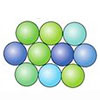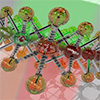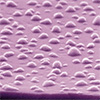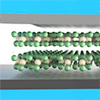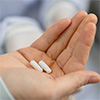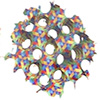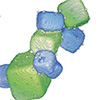Total iron-binding capacity
Total iron-binding capacity (TIBC) or sometimes transferrin iron-binding capacity is a medical laboratory test that measures the blood's capacity to bind iron with transferrin. Transferrin can bind two atoms of ferric iron (Fe3+) with high affinity. It means that transferrin has the capacity to transport approximately from 1.40 to 1.49 mg of iron per gram of transferrin present in the blood.
It is performed by drawing blood and measuring the maximum amount of iron that it can carry, which indirectly measures transferrin since transferrin is the most dynamic carrier. If TIBC values are known, the transferrin concentration can be estimated with the following formulas:
To measure TIBC in the blood is less expensive than a direct measurement of transferrin.
The TIBC should not be confused with the unsaturated iron-binding capacity or UIBC (LOINC 2501-5, 22753-8 & 35216-1). The UIBC is calculated by subtracting the serum iron from the TIBC.
Check out these latest Nanowerk News:

